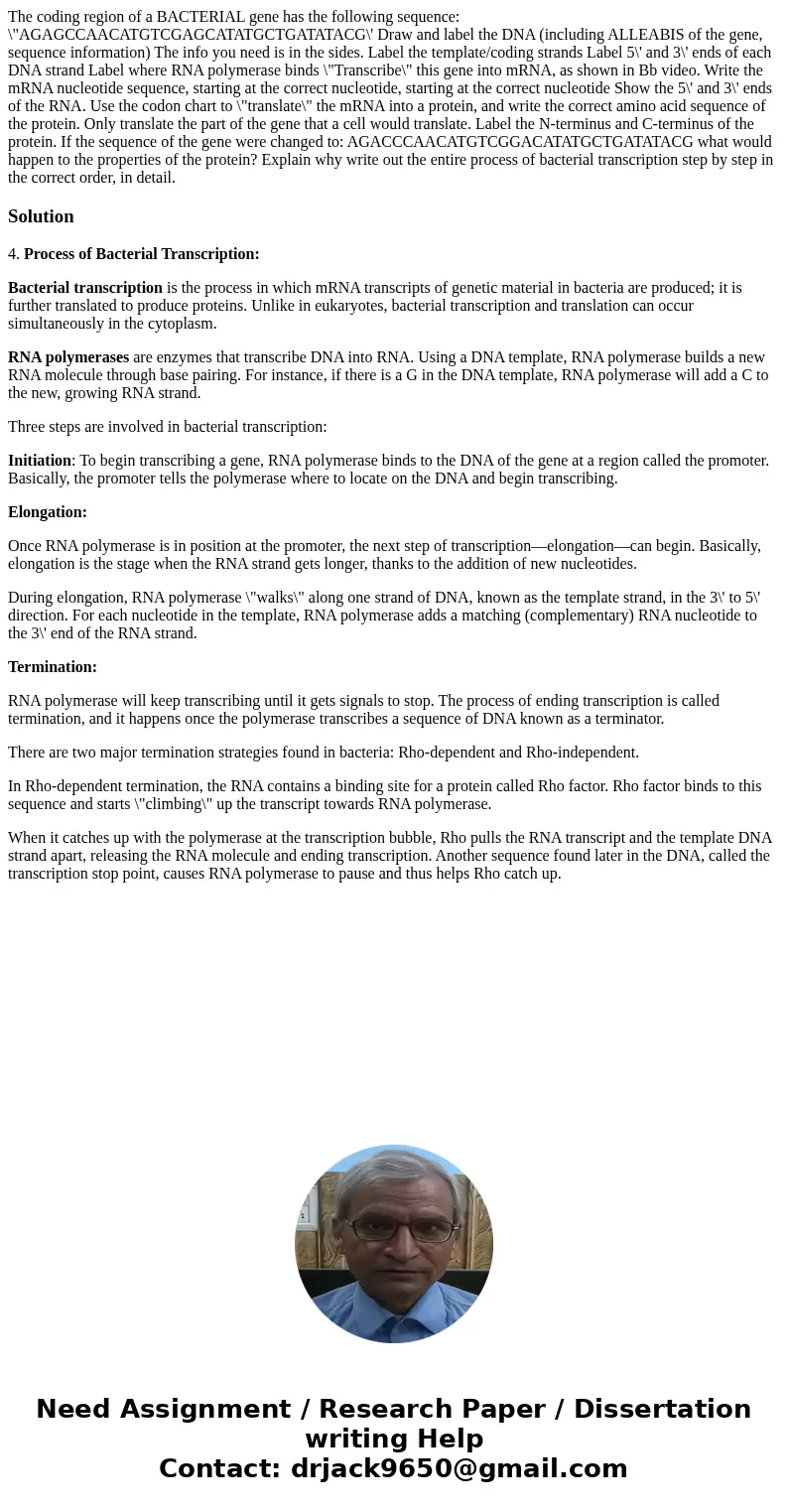The coding region of a BACTERIAL gene has the following sequ
Solution
4. Process of Bacterial Transcription:
Bacterial transcription is the process in which mRNA transcripts of genetic material in bacteria are produced; it is further translated to produce proteins. Unlike in eukaryotes, bacterial transcription and translation can occur simultaneously in the cytoplasm.
RNA polymerases are enzymes that transcribe DNA into RNA. Using a DNA template, RNA polymerase builds a new RNA molecule through base pairing. For instance, if there is a G in the DNA template, RNA polymerase will add a C to the new, growing RNA strand.
Three steps are involved in bacterial transcription:
Initiation: To begin transcribing a gene, RNA polymerase binds to the DNA of the gene at a region called the promoter. Basically, the promoter tells the polymerase where to locate on the DNA and begin transcribing.
Elongation:
Once RNA polymerase is in position at the promoter, the next step of transcription—elongation—can begin. Basically, elongation is the stage when the RNA strand gets longer, thanks to the addition of new nucleotides.
During elongation, RNA polymerase \"walks\" along one strand of DNA, known as the template strand, in the 3\' to 5\' direction. For each nucleotide in the template, RNA polymerase adds a matching (complementary) RNA nucleotide to the 3\' end of the RNA strand.
Termination:
RNA polymerase will keep transcribing until it gets signals to stop. The process of ending transcription is called termination, and it happens once the polymerase transcribes a sequence of DNA known as a terminator.
There are two major termination strategies found in bacteria: Rho-dependent and Rho-independent.
In Rho-dependent termination, the RNA contains a binding site for a protein called Rho factor. Rho factor binds to this sequence and starts \"climbing\" up the transcript towards RNA polymerase.
When it catches up with the polymerase at the transcription bubble, Rho pulls the RNA transcript and the template DNA strand apart, releasing the RNA molecule and ending transcription. Another sequence found later in the DNA, called the transcription stop point, causes RNA polymerase to pause and thus helps Rho catch up.

 Homework Sourse
Homework Sourse